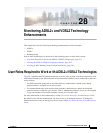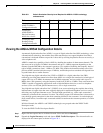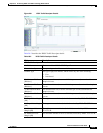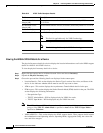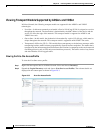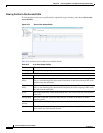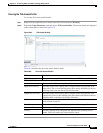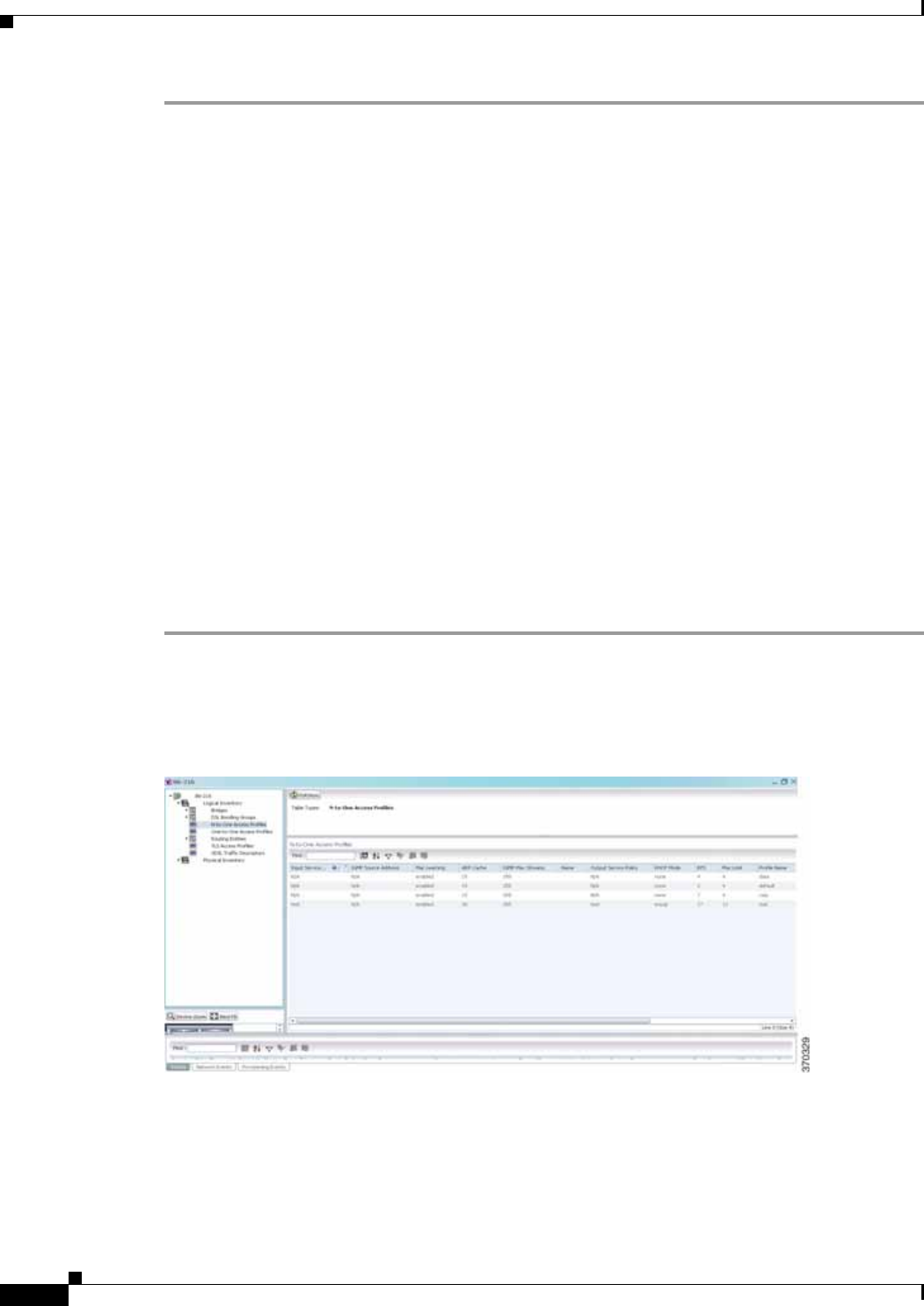
28-8
Cisco Prime Network 4.0 User Guide
OL-29343-01
Chapter 28 Monitoring ADSL2+ and VDSL2 Technology Enhancements
User Roles Required to Work with ADSL2+/VDSL2 Technologies
Viewing Transport Models Supported by ADSL2+ and VDSL2
In Prime Network, the following transport models are supported in the ADSL2+ and VDSL2
technologies:
• N-to-One—In this most commonly used model, a Service VLAN tag (S-Vid) is assigned to a service
throughout the network. The destination is determined by the MAC address of the device and the
service VLAN at the edge of the network. This transport model is supported on ADSL2+ and
VDSL2 line cards.
• One-to-One—In this model, the destination is determined by a pair of VLAN tags, which must be
unique throughout the network. This transport model is supported on B6 VDSL2 line cards.
• Transparent LAN Service (TLS) —This model allows transparency to the business customers while
transporting business traffic between geographically disperse business endpoints. The traffic that is
transported by the infrastructure that interconnects the locations is transparent to the carrier network
(including protocols such as STP, unicast and multicast protocols). The traffic can be of any format
and often includes VLAN tagged traffic.
Viewing the N-to-One Access Profile
To view the N-to-One access profile:
Step 1 Right-click the required device in Prime Network Vision and choose Inventory.
Step 2 Expand the Logical Inventory node and choose N-to-One Access Profiles. The relevant details are
displayed in the content pane as shown in Figure 28-3.
Figure 28-3 N-to-One Access Profile




